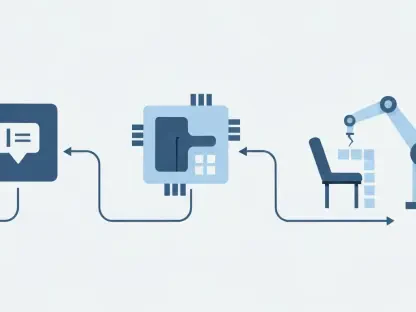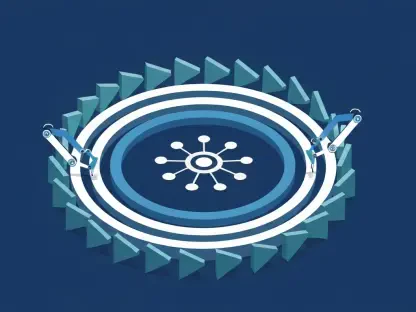In the ongoing battle against neurodegenerative conditions such as Alzheimer’s, Parkinson’s, and brain tumors, a formidable obstacle has long hindered effective treatment: the blood-brain barrier (BBB). This natural protective shield around the brain blocks most therapeutic drugs from reaching their intended targets, leaving countless patients with limited options for relief. However, a pioneering study conducted by researchers from the University of the Basque Country (UPV/EHU) in Spain and Tulane University in the USA offers a transformative solution. By harnessing the power of machine learning (ML), the team, guided by the CHEMIF.PTML Lab, has developed an innovative approach to design nanoparticles capable of crossing the BBB and delivering drugs directly to the brain. This breakthrough promises to revolutionize treatment strategies for millions affected by debilitating brain disorders, merging cutting-edge technology with urgent medical needs. The implications of this research extend beyond mere theory, pointing toward faster, more efficient ways to address some of healthcare’s toughest challenges.
Harnessing Technology for Brain Health
The intersection of machine learning and nanotechnology marks a significant leap forward in tackling the complexities of brain drug delivery. Traditional methods for designing drug carriers often rely on slow, costly trial-and-error processes that can take years to yield results. In contrast, the ML approach adopted by the research team analyzes vast datasets to predict which nanoparticle designs are most likely to succeed in crossing the BBB. This data-driven strategy dramatically reduces the time and resources needed for development, enabling scientists to focus on the most promising candidates from the outset. By streamlining the initial screening process, this technology offers a practical pathway to accelerate the creation of effective therapies for conditions that demand urgent solutions.
Moreover, the researchers have introduced a groundbreaking framework known as IFE.PTML, which stands for Information Fusion Encoding with Perturbation Theory and Machine Learning. This method integrates diverse data points, including the physicochemical properties of nanoparticles and biological assay outcomes, to generate highly accurate predictions. Unlike standard models that falter with incomplete or varied datasets, IFE.PTML accounts for uncertainties, ensuring robust and reliable results. This innovation not only enhances the precision of nanoparticle design but also sets a new standard for computational tools in biomedical research, demonstrating the potential of technology to solve intricate health challenges.
Nanoparticles as Precision Carriers
Nanoparticles, particularly those based on magnetite, emerge as critical players in the quest to deliver drugs to the brain. Their minute size, high surface area, and ability to be tailored with specific coatings make them uniquely suited to navigate the BBB’s defenses. The study explored two magnetite nanoparticle systems, labeled Fe3O4_A and Fe3O4_B, with distinct sizes and coatings such as PMAO and PMAO-PEI. Experimental findings revealed that these variations significantly influence their capacity to target specific brain regions, whether neuronal cells or tumor sites. The alignment between the ML predictions and real-world testing underscores the potential of nanoparticles as versatile carriers, capable of addressing a range of therapeutic needs with precision.
Beyond their structural advantages, nanoparticles offer the promise of biocompatibility, ensuring they can interact safely within the human body. The research highlighted how specific coatings impact the particles’ stability and effectiveness, with PMAO showing particular suitability for crossing the BBB and reaching neuronal targets. Meanwhile, PMAO-PEI coatings demonstrated potential for applications in brain tumor therapy. This level of customization, guided by machine learning insights, illustrates how nanotechnology can be fine-tuned to meet the demands of complex medical scenarios, paving the way for treatments that are both targeted and minimally invasive.
Precision Predictions for Better Outcomes
A standout feature of this research lies in its focus on predicting bioactivity parameters essential for safe and effective drug delivery. The ML model, utilizing a high-performing random forest algorithm, achieved remarkable accuracy—exceeding 95% on training datasets and nearly 90% on testing sets. Such precision enables the identification of nanoparticle designs that minimize toxicity while maximizing their ability to cross barriers and target specific cells. This capability is crucial for developing therapies that can address brain tumors or neurodegenerative conditions without causing unintended harm, offering a clearer path to clinical application.
Additionally, the emphasis on bioactivity indicators like inhibitory concentrations and zeta potential provides deeper insights into how nanoparticles interact with biological systems. These metrics, predicted with high reliability by the IFE.PTML framework, help determine which combinations of size and coating are best suited for particular therapeutic goals. For instance, the model’s ability to forecast outcomes for specific cell lines ensures that treatments can be optimized for diverse patient needs. This level of detail not only enhances the safety profile of potential therapies but also boosts confidence in the computational approach as a cornerstone of modern medical research.
Shaping the Future of Personalized Care
This study represents more than a technical achievement; it signals a broader shift toward personalized medicine in brain health. By leveraging machine learning to predict how nanoparticles behave in specific cellular environments, the research lays the groundwork for therapies tailored to individual patients or disease profiles. This targeted approach could significantly improve treatment outcomes, ensuring that drugs reach their intended destinations with greater efficacy and fewer side effects. The potential to customize solutions for conditions as varied as Alzheimer’s or brain tumors highlights the transformative impact of integrating computational tools into healthcare.
Looking ahead, the implications of this work extend to the broader landscape of medical innovation. The successful validation of ML predictions through experimental synthesis of magnetite nanoparticles demonstrates a reliable model that other researchers can build upon. As the team continues to refine their methods, exploring combinations of machine learning with other advanced technologies, the vision of bespoke treatments becomes increasingly attainable. This progress offers renewed hope for those grappling with brain disorders, suggesting a future where medical interventions are as unique as the individuals they aim to help.
Building on a Foundation of Innovation
Reflecting on the strides made, the collaborative efforts between UPV/EHU and Tulane University delivered a powerful tool in the IFE.PTML framework, which reshaped nanoparticle design for brain drug delivery. The impressive accuracy of the random forest model, coupled with experimental confirmation of predictions, established a benchmark for efficiency in biomedical research. Testing magnetite systems with varied coatings revealed actionable insights into optimizing therapies for specific brain targets, addressing long-standing barriers in treatment development. This work laid a solid foundation for tackling neurodegenerative challenges with unprecedented precision.
As a next step, expanding these computational strategies to identify new drug candidates stands as a priority. Integrating deeper data analysis and cross-disciplinary partnerships could further enhance the design of delivery systems. Encouraging global collaboration and investment in such technologies will be essential to translate these advancements into widespread clinical solutions. The path forward involves not just refining existing models but also ensuring that the benefits of this research reach patients in need, marking a significant leap toward overcoming the hurdles of brain-related disorders.









